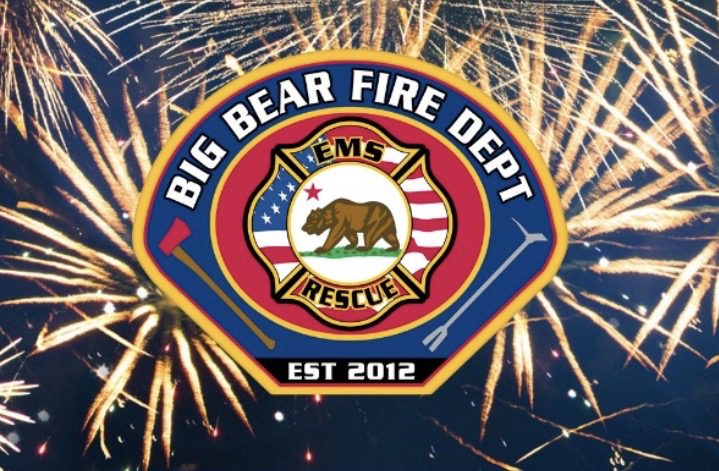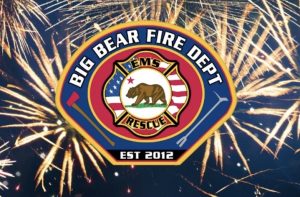Home » Departments » United States » California » Big Bear Lake » Big Bear Fire Department
Overview
The Big Bear Fire Department (BBFD) is the consolidated fire protection agency serving the Big Bear Valley. The department provides all-risk emergency response, including fire suppression, paramedic-level emergency medical services, technical rescue, hazardous materials response, and community risk reduction programs. BBFD’s service area encompasses the City of Big Bear Lake, Big Bear City, Sugarloaf, Baldwin Lake, Erwin Lake, Moonridge, and surrounding unincorporated communities, covering a unique mountain environment that experiences significant seasonal population surges.
Fire Stations and Specialized Programs
BBFD operates from five stations, each with specific roles and responsibilities:
• Station 281 – Big Bear Lake Headquarters
Central hub for administration, training, and valley-wide response.
• Station 282 – Big Bear City
Provides coverage for the eastern residential and commercial sectors.
• Station 283 – Sugarloaf
Protects Sugarloaf, Moonridge, and wildland-urban interface areas.
• Station 284 – Baldwin Lake (Seasonal/Winter Coverage)
Activated during winter months and high fire season, strategically enhancing response capability when adverse weather and increased tourism strain resources.
• Station 285 – Flight Medic / RN Program
Hosts BBFD’s specialized flight paramedic and registered nurse (RN) team, providing advanced pre-hospital interventions and critical care transport in partnership with regional air medical providers. This program is a unique and vital asset for an isolated mountain community where rapid access to trauma and specialty care is limited.
Staffing and Deployment
The department faces ongoing staffing challenges that directly affect service delivery:
• Shift Staffing: NFPA 1710 standards recommend 15–17 firefighters per shift for an agency with three to four staffed stations. BBFD is often forced to operate with as few as 10 firefighters valley-wide, stretching resources thin across multiple stations.
• Crew Configuration: Engines are regularly staffed with 2-person crews, below the standard 3–4, which impacts operational safety, effectiveness, and the ability to meet incident benchmarks.
• Recruitment and Retention: BBFD has experienced a steady loss of personnel to surrounding agencies that offer more competitive compensation, stable leadership environments, and greater long-term career opportunities. Recruitment has not kept pace with attrition, requiring frequent mandatory overtime and contributing to firefighter fatigue and burnout.
Leadership and Organizational Climate
The department is in a period of organizational transition. The current Fire Chief is tasked with maintaining BBFD’s independence amid the potential risk of annexation by Cal Fire or San Bernardino County Fire. While accountability and performance are emphasized, internal assessments note challenges in leadership continuity and middle-management effectiveness. These dynamics have contributed to morale concerns and workforce instability.
Community Impact
Despite operational and staffing difficulties, BBFD continues to respond to over 5,000 emergency calls annually, the majority being EMS incidents. Seasonal staffing of Station 284 ensures additional coverage during periods of high demand, while Station 285’s flight medic/RN program significantly enhances patient outcomes through advanced medical care and expedited transport.
The combination of dedicated personnel, specialized programs, and community-focused service delivery remains a strength of BBFD. However, sustained staffing shortages and leadership challenges present risks to long-term reliability, firefighter safety, and compliance with national response standards.
Conclusion
The Big Bear Fire Department is a critical public safety agency for the Big Bear Valley, uniquely positioned to meet the needs of a mountain community with high seasonal fluctuations. To maintain independence and ensure sustainable service delivery, BBFD will need to address staffing shortages, workforce retention, and organizational leadership stability. Strengthening these areas will enhance operational capacity, improve morale, and safeguard the community against both everyday emergencies and large-scale incidents.
Fire Departement
Sorry, no records were found. Please adjust your search criteria and try again.
Sorry, unable to load the Maps API.
Contact Information
, California





Rating Breakdown
1.7/5
1.7/5
2.7/5
2.3/5
3 Reviews on “Big Bear Fire Department”
Leadership and Administration
• Former Fire Chief: The previous Fire Chief left behind a legacy of fiscal mismanagement and poor decision-making. His inability to balance departmental needs with responsible spending eroded trust both internally and externally. The impact of his missteps continues to affect operations today.
• Current Fire Chief: While the current Chief has recognized the looming threat of annexation into Cal Fire or San Bernardino County Fire (SBCOFD), his approach has largely consisted of pressuring suppression personnel to “behave appropriately” rather than addressing the systemic issues. This leadership style is rooted in fear of personal job loss rather than building a resilient, well-functioning fire department.
Battalion Chiefs
The department’s three Battalion Chiefs demonstrate an alarming lack of operational leadership:
1. BC #1: Lacks professionalism and communicates in a manner that undermines confidence, to the point where his correspondence is better suited for crayons than command staff.
2. BC #2: Advanced to the BC rank without even completing Fire Captain training, leaving him unequipped to mentor or effectively manage line personnel. Takes off every other rack of shifts due to neck injury and incompetence.
3. BC #3: Previously known as a bully in his role as Fire Captain, he now carries the same tendencies into a micromanaging and toxic leadership style as BC. Like we forgot who you were on the suppression floor months ago.
These deficiencies in the Battalion Chief ranks cripple the chain of command and erode morale among the floor personnel and paint a do as I say not as I do lead for others together follow.
Suppression Personnel
The rank-and-file suppression staff remain dedicated to serving the community but often lack skills, dedication to the craft, or awareness of how political decisions at the city council and fire board levels directly affect department operations. This disconnect prevents them from effectively advocating for themselves and for the services the community needs.
Firefighter Retention
Perhaps the most telling indicator of the department’s dysfunction is the steady outflow of personnel. Numerous firefighters have left BBFD for surrounding agencies that offer better leadership, more supportive work environments, and stronger organizational stability. This loss of experienced firefighters not only drains institutional knowledge but also places additional strain on those who remain. The trend reflects a growing recognition among personnel that toxic management has made long-term careers at BBFD unsustainable.
Union Representation
The local union has proven weak at best in representing its members, both within Big Bear and in solidarity with surrounding agencies. This lack of strength leaves personnel vulnerable to poor administrative decisions and erodes confidence in collective bargaining efforts.
Fire Board
Perhaps the most concerning issue is the Fire Board itself. So far removed from the realities of how a fire department should operate, the board has demonstrated a willingness to cut critical services—even in their own neighborhoods. This detachment jeopardizes community safety and reflects a governance failure at the highest level.
⸻
Conclusion
The Big Bear Fire Department is at a crossroads. Without meaningful reform in leadership, accountability, and governance, the department risks further decline in both operational effectiveness and community trust. A comprehensive restructuring—starting with leadership at the Chief and Battalion Chief levels, stronger union advocacy, improved firefighter retention strategies, and a fire board committed to supporting rather than dismantling fire services—is essential to restoring the department’s strength and credibility.
The department is doing great internally but is having issues with the governing boards. With the new fire chief, things are looking up. We are a small department but have a strong force of first responders that get the job done in a daily basis. We have 3 engines and 3 ambulances and have the ability to staff up to 6 ambulances when it’s busy by running tandem with an engine.
We have new equipment and train everyday. The new engines are awesome and fully equipped to do anything that comes our way.
Big Bear Fire is a diamond in the rough. It truly is the best department in my opinion, but the department is going through a rough patch with the governing board. It is believed that they will come to their senses and figure out how to move forward correctly. This is why I took a couple stars from morale.
The other review on here is most likely from an employee that couldn’t make it with this organization due to weakness and misbehavior, this other review is full of hate and lies and the jealous, and insane person should think of better things to do.
The Big Bear Fire Department (BBFD) continues to struggle under inconsistent and often toxic leadership, characterized by favoritism, a “different rules for different people” mentality and a lack of accountability across all ranks. These issues have fostered an environment where morale, retention, and operational efficiency have suffered significantly.
Leadership and Management
The department’s leadership has continuously demonstrated mismanagement of both personnel and finances. Instead of fostering unity and professional development, leadership decisions have deepened division and mistrust. A lack of transparency, inconsistent discipline, and preferential treatment have become hallmarks of the department’s culture.
Rather than focusing on mentorship and rebuilding morale, command staff often rely on fear-based management and micromanagement—further isolating line personnel. This has eroded confidence throughout the ranks and created an atmosphere of distrust.
Battalion Chiefs
The Battalion Chief level, which should represent the backbone of operational leadership, has become a weak link in the chain of command. Each of the three Chiefs exhibits deficiencies that collectively undermine efficiency, communication, and confidence in leadership.
Collectively, these shortcomings create a culture of “do as I say, not as I do,” creating policies for the management staff only, further disconnecting administration from operations.
Organizational Mismanagement
In violation of NFPA 1710 standards, the department has opted to reduce suppression staffing while expanding ambulance operations—compromising fireground safety and diminishing emergency response capability for the citizens of Big Bear Valley.
Despite decreased service levels, administrative and command salaries have continued to increase, further highlighting misplaced fiscal priorities.
The Fire Board, once complacent, has begun recognizing these financial and managerial discrepancies. However, accountability remains insufficient without direct corrective action to restore balanced staffing, transparent budgeting, and community-focused service delivery.
Firefighter Retention
The department has faced chronic turnover in recent years. Many skilled firefighters have transferred to neighboring agencies offering healthier work environments, consistent leadership, and better support systems. This loss of experience and institutional knowledge has left remaining personnel overstretched and demoralized, reflecting the deeper systemic dysfunction that continues to plague BBFD.
Union and Brotherhood
The lack of effective union leadership has left many members feeling abandoned. Weak representation and poor advocacy have led to diminished solidarity among personnel. The traditional sense of brotherhood—once a cornerstone of the fire service—has eroded, leaving firefighters without a unified voice or support system.
Fire Code and Revenue Practices
Rather than focusing on community protection and prevention, the department has increasingly enforced non-critical or questionable fire code measures to bolster citation revenue. This approach prioritizes financial optics over genuine public safety outcomes, undermining community trust and further straining personnel morale.
Fire Board Governance
The Fire Board’s detachment from the operational realities of the department has led to decisions that reduce critical services, even within their own districts. Their focus on short-term financial metrics over long-term sustainability represents a governance failure that continues to endanger both citizens and personnel.
Conclusion
The Big Bear Fire Department stands at a critical crossroads. Without immediate structural reform—centered on ethical, transparent leadership and genuine accountability—the department risks further decline in operational readiness and public confidence.
To rebuild a resilient and respected organization, BBFD must:
• Replace fear-based leadership with collaborative mentorship,
• Reinvest in suppression staffing and firefighter training,
• Strengthen union representation and internal advocacy,
• Hold administrative leaders accountable for financial and operational decisions, and
• Reestablish community trust through integrity-driven service.
Only through these actions can the department begin to restore its professional credibility, internal cohesion, and commitment to the citizens it serves.